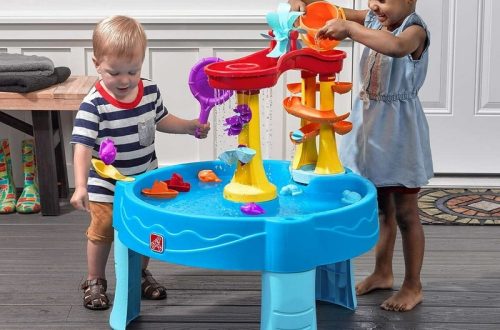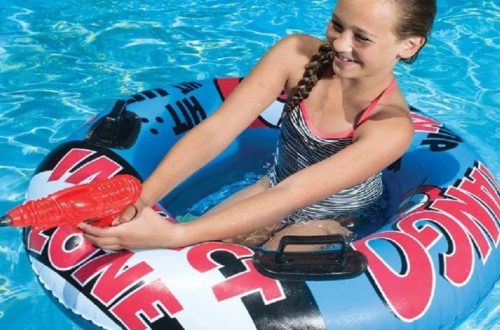Part 1: The Excitement of Playing with Blue Car Toys
1. A Source of Endless Entertainment:
Blue car toys offer a thrilling and immersive experience for children, providing hours of entertainment. The excitement of controlling a toy car and watching it zoom across the floor can captivate a child’s attention and spark their imagination. Whether they are racing against a friend, creating obstacle courses, or simply exploring their surroundings, blue car toys offer a wide range of play possibilities.
The tactile experience of playing with a toy car can also be beneficial for children’s development. As they grasp, push, and steer their toys, they are strengthening their fine motor skills and developing hand-eye coordination. Additionally, the sense of control and agency that comes with playing with a toy car can boost a child’s confidence and self-esteem.
2. Capturing the Imagination:
Blue car toys can be a powerful tool for stimulating a child’s imagination. As they play with their toys, children can create their own imaginary worlds and races, filled with thrilling adventures and exciting challenges. They might dream up elaborate storylines, invent new characters, and even design their own race tracks.
This imaginative play can help children develop their creativity, problem-solving skills, and language abilities. As they create and tell stories, they are practicing their vocabulary, grammar, and storytelling skills. Additionally, imaginative play can encourage children to think critically and creatively, as they navigate different scenarios and find solutions to challenges.

Part 2: Educational Value of Blue Car Toys
1. Introduction to Physics Principles:
Playing with blue car toys can be a fun and engaging way to introduce children to basic physics principles. As they experiment with different factors such as speed, acceleration, and momentum, children can gain a hands-on understanding of how these concepts apply to real-world objects.
For example, children might observe that pushing a car harder makes it go faster, demonstrating the relationship between force and acceleration. They can also explore how the surface a car is traveling on affects its speed and friction. Additionally, children might experiment with inclines to understand the concept of potential and kinetic energy.
By exploring these physics principles through play, children can develop a curiosity about the world around them and a foundation for future learning in science. These early experiences can also help them develop critical thinking and problem-solving skills, as they learn to analyze and interpret the results of their experiments.
2. Enhancing Hand-Eye Coordination:
Manipulating blue car toys requires precise hand movements, which can help children develop their hand-eye coordination. As they push, steer, and control the cars, they are refining their fine motor skills and strengthening the muscles in their hands and fingers. This improved hand-eye coordination is essential for various activities, including writing, drawing, sports, and even playing musical instruments.
Additionally, playing with blue car toys can help children develop their spatial awareness and depth perception. As they navigate the cars around obstacles and through different environments, they are learning to judge distances and angles, which is a valuable skill for many everyday tasks.

Part 3: Social and Emotional Development through Blue Car Toys
1. Encouraging Cooperative Play:
Blue car toys can be a powerful tool for fostering cooperative play among children. When playing together, children often engage in shared races, collaborative track-building, and friendly competitions. These activities require children to take turns, share resources, and negotiate rules, which can contribute to their social development.
By participating in cooperative play, children learn important social skills such as empathy, compromise, and teamwork. They also develop a sense of belonging and connection with their peers, which can be beneficial for their overall well-being. Additionally, cooperative play can help children understand the importance of working together towards a common goal and the positive outcomes that can result from collaboration.
2. Emotional Expression and Engagement:
Blue car toys can offer a creative outlet for children to express their emotions and engage in meaningful play. As they create narratives and scenarios, children can channel their feelings, work through challenges, and develop a better understanding of themselves and others.
For example, a child might use a toy car to represent a feeling of anger or frustration, allowing them to safely express and process these emotions. Or, they might create a story about overcoming a challenge, which can help them develop resilience and problem-solving skills.
Part 4: Physical Activity and Motor Skill Development
1. Encouraging Physical Activity:

Blue car toys can be a powerful tool for encouraging physical activity in children. As they play with these toys, they are often motivated to move, run, and participate in active play sessions. This can contribute significantly to their overall physical well-being by promoting a more active lifestyle.
When children engage in physical activity, they are strengthening their muscles, improving their cardiovascular health, and boosting their energy levels. Additionally, physical activity can help children develop better sleep habits, reduce stress, and improve their mood.
2. Developing Spatial Awareness:
Playing with blue car toys can be a valuable tool for developing a child’s spatial awareness and depth perception. As they maneuver their cars through various obstacles and environments, children are constantly making judgments about distances, spaces, and angles. This skill is crucial for many everyday tasks, such as driving, playing sports, or even navigating through a crowded room.
For example, when a child is racing their car around a track, they must constantly adjust their speed and direction to avoid obstacles and stay on the course. This requires them to accurately judge the distance between their car and the obstacles, as well as the angle at which they need to turn to avoid a collision. Similarly, when playing sports, athletes must have a strong sense of spatial awareness to anticipate the movements of their opponents and position themselves correctly to make plays.
Part 5: Choosing the Ideal Blue Car Toy
1. Prioritizing Safety:

When selecting a blue car toy for a child, safety should be the utmost priority. Here are some key factors to consider:
- Non-Toxic Materials: Ensure that the toy is made from non-toxic materials, free from harmful substances that could pose a health risk to the child.
- Age Appropriateness: Choose a toy that is suitable for the child’s age. Toys designed for older children may have features or small parts that are not appropriate for younger children.
- Choking Hazard: Avoid toys with small parts that could pose a choking hazard, especially for young children. Look for toys that comply with safety standards and are appropriate for the child’s age.
- Well-Constructed: Opt for toys that are well-constructed and durable, reducing the risk of breakage and potential injuries.
2. Exploring Diverse Designs:
A variety of blue car toys can offer a more enriching and engaging play experience for children. Consider the following factors:
- Remote-Controlled Cars: These toys can introduce children to technology and provide a sense of control and excitement as they maneuver the cars.
- Pull-Back Cars: Pull-back cars are simple and easy to use, making them suitable for younger children. They can also be used for racing and other imaginative play scenarios.
- Customizable Sets: Customizable sets allow children to personalize their play experience and create unique scenarios. This can encourage creativity and problem-solving skills.
- Different Sizes: Consider toys of different sizes to cater to various play preferences. Larger cars can be used for outdoor play, while smaller cars can be played with indoors.
Part 6: Stimulating Playtime with Blue Car Toys
1. Creating Play Environments:

To maximize the enjoyment and educational benefits of blue car toys, consider creating imaginative play environments. Setting up tracks, ramps, and obstacles can transform a simple toy into a dynamic and engaging play experience. Children can let their creativity run wild as they design and navigate through their own miniature racecourses.
These play environments can stimulate children’s imagination and problem-solving skills. As they experiment with different layouts and challenges, they learn to think critically and creatively. Additionally, these environments can encourage cooperative play, as children work together to build and modify their tracks.
2. Integrating with Other Toys:
Blue car toys can be combined with other playthings to create even more diverse and engaging play experiences. For example, children might use action figures as drivers or passengers, or they could build ramps and tunnels using building blocks.
By integrating different toys, children can expand their imaginative play scenarios and create more complex and immersive stories. This can help them develop their creativity, language skills, and social abilities. Additionally, combining different types of toys can encourage children to think outside the box and explore new ways of playing.



